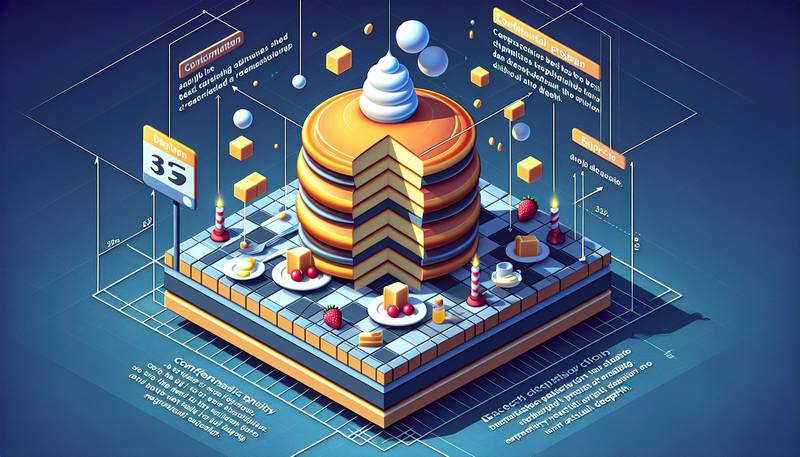Isometric Design: Giving Depth to 2D Graphics

What is Isometric Design?Isometric design is like that sneaky magician in the corner of a party, creating the illusion of depth without actually digging a hole. It combines the best characteristics of two-dimensional graphics with a clever perspective that tricks your eyes into believing there’s more dimensionality at play. Imagine a flat pancake trying to morph into a three-tiered cake. No frosting necessary—just a little clever angle play!This design method emanates from the realm of isometric projection, where three dimensions can be represented in two-dimensional space without any perspective distortion. Think of it as the architectural blueprint of creativity, ideal for video games, infographics, and anything else that benefits from a little extra spatial pizzazz.Key Features of Isometric DesignWhy do people adore isometric graphics? Here are some delightful qualities that add a dash of charm to this design style:- Consistent Angle: Every line and object maintains a fixed angle, allowing for a uniform look. This isn’t just any other relationship—it’s a committed angle that never strays!
- No Vanishing Points: Isometric designs don’t vanish into thin air; they don’t require a vanishing point. No running away allowed here, folks.
- Enhanced Spatial Representation: Objects can be stacked, layered, and arranged without losing their charm, adding depth while keeping everything neatly organized. It’s like playing Tetris but without the stress of a timer!
- Playful Universality: Isometric design adapts easily across various platforms—from video games to infographics. It’s the Swiss Army knife of design styles, minus the risk of cutting your fingers.
Applications of Isometric DesignIsometric design isn’t just twiddling its thumbs. It has a bustling career in various fields, strutting its stuff like the rock star of graphic design. Here are a few places you might spot it:- Video Games: Isometric art gives games a distinct look while allowing players to see their surroundings from a unique angle. It’s like playing peek-a-boo with reality!
- Infographics: Statistics and data can morph into engaging visuals thanks to isometric design. Goodbye boring charts, hello eye-catching content that even your dog might find interesting (assuming your dog is into data).
- Web Design: Isometric elements can elevate user interfaces, creating a delightful browsing experience. It’s like giving your website a fresh coat of paint and sprucing up its lawn.
- Architecture: Designers sometimes use isometric drawings to visualize projects. It’s as if they’re giving their structures a “coming soon” trailer!
Benefits of Using Isometric DesignEmploying isometric design can lead to some nifty advantages. Who wouldn’t want to have their cake and eat it too? Well, in this case, you can have your design and still impress your clients. Check out the benefits:- Visual Clarity: Isometric graphics enhance the understanding of spatial relationships, making complex information easier to digest. It’s akin to a buffet where every dish is labeled!
- Memorability: This style stands out amidst a sea of flat designs, making it more memorable. It’s the quirky uncle at the family reunion that everyone talks about, for better or worse!
- Creativity Boost: The unique angles and dimensions spark creativity, allowing designers to push boundaries. It’s like giving your imagination a caffeine boost!
- Engagement: The engaging visuals draw in viewers and keep them clicking. It’s the proverbial cat video that keeps people from working!
More Than Meets The EyeIsometric design is more than just a clever trick—it’s a versatile tool that has quietly carved its niche in the world of graphics. Whether you’re building a virtual city in a game, visualizing some mind-boggling data, or dressing up a website, isometric design adds depth and excitement without the risk of drowning in the ocean of flat visuals.The next time you sit down to create something eye-catching, remember: there’s a whole dimension waiting for you. While you might not find it at the bottom of your coffee cup, it’s definitely lurking in those clever angles and perspectives. Who knew that making things look three-dimensional could be so much fun? Now that’s a plot twist worth exploring!
|
|







